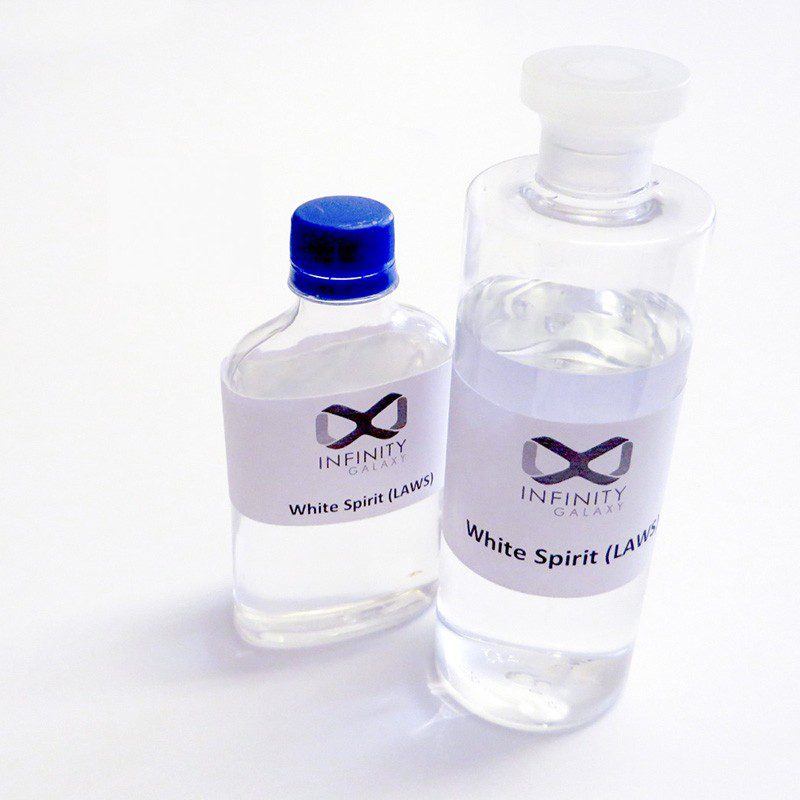Wide application and high quality make White Spirit one of the most popular solvents in the world.
white spirit is produced as a fractional distillation from naphtha or kerosene.
It is used mainly as a solvent in the paint industry. White spirits or mineral spirits are mixtures of paraffins, cycloparaffins and aromatic hydrocarbons.
If you are eager to know more about this type of solvent, follow this article.
Process of White Spirit Production
The various types of white spirit are produced as distillation fractions from naphtha or kerosene components of crude petroleum. Kerosene distillation occurs due to different boiling point components.
It can produce three hydrocarbon fractions from kerosene distillation, the initial distillation fraction is known as zero white spirit.
This cut has about 20% or more aromatic composition in its structure. Hydrogenation processes can be used to produce solvents with less aromatic compounds.
Composition of White Spirit
What is white spirit made from? White spirit is made up of various liquid hydrocarbons, mainly aliphatic (paraffin) and also contain aromatic hydrocarbons (benzene, xylenes).

Saturated aliphatic and cyclic hydrocarbons constitute about 85% of the content of white spirit and aromatic hydrocarbons about 15% (by weight).
Nearly all the hydrocarbons are in the C7-C12 range.
Types of White Spirits
White spirits are four types – Type 0 (high aromatic) , Type 1 (hydrodesulfurization) , Type 2 (low aromatic) and Type 3 (odorless). The composition of the various types of white spirit depends on the production process.
Type 0:
High aromatic white spirit is a complex combination of hydrocarbons obtained from the distillation of crude oil .
It consists of predominantly saturated hydrocarbons having carbon numbers in the range C9-C12 and a boiling point between approximately 140- 220°C.
Type 1:
This type of white spirit is obtained from type zero catalytic hydrodesulfurization process.
It consists of hydrocarbons having carbon numbers in the range C7-C12 and a boiling point between approximately 90-230°C ( Aromatics < 25%).
Type 2:
Low aromatic white spirit is a complex combination of hydrocarbons obtained from refinery processes.
This type contains aliphatic hydrocarbons in the range C7 to C12 and boiling point in the range of approximately 90 to 230°C (Aromatics< 5 %).
Type 3:
The fourth type of white spirit is a complex combination of hydrocarbons obtained by refining a petroleum fraction with hydrogen in the presence of a catalyst.
It consists of hydrocarbons having carbon numbers mainly in the range C6-C13 and a boiling point between approximately 65-230°C (Aromatics < 1%).
Grades of White Spirit
Also for each type of white spirit there are three different grades. each grade is determined by the conditions of distillation:
– Low flash: in this grade the flash point is in the range of 21 to 30 Centigrade.
– Regular flash : in this grade the flash point is in the range of 31 to 54 Centigrade.
– High flash : in this grade the flash point is more than 54 Centigrade.
The grade is determined by the crude oil used as the starting material and the conditions of distillation.
Physical Properties of White Spirit
White spirit is clear, colorless, non-viscous solvent with a characteristic odor. The density of white spirit is 790 kg/m³. Here are some properties of white spirit type 1 shown in the table below as an example:
| Property | Low flash | Regular | High flash |
| Initial boiling point (IBP) | 130–144 °C | 145–174 °C | 175–200 °C |
| Final boiling point (FBP) | IBP+21 °C, max. 220 °C | ||
| Average relative molecular mass | 140 | 150 | 160 |
| Relative density 15 °C (59 °F) | 0.765 | 0.780 | 0.795 |
| Flash point | 21–30 °C | 31–54 °C ° | > 55 °C |
| Vapor pressure kPa at 20 °C (68 °F) | 1.4 | 0.6 | 0.1 |
| Volatility n-butyl acetate = 1 | 0.47 | 0.15 | 0.04 |
| Autoignition temperature | 240 °C | 240 °C | 230 °C |
| Explosion limits (Flammable Range) % by volume in air | 0.6–6.5 | 0.6–6.5 | 0.6–8 |
| Vapor density air=1 | 4.5–5 | 4.5–5 | 4.5–5 |
| Refractive index at 20 °C (68 °F) | 1.41–1.44 | 1.41–1.44 | 1.41–1.44 |
| Viscosity cps, 25 °C (77 °F) | 0.74–1.65 | 0.74–1.65 | 0.74–1.65 |
| Solubility % by weight in water | < 0.1 | < 0.1 | < 0.1 |
| Kauri-butanol value | 29–33 | 29–33 | 29–33 |
| Aniline point | 60–75 °C | 60–75 °C | 60–75 °C |
| Reactivity | reaction with strong oxidizing agents | ||
| Odor threshold mg/m3 | – | 0.5–6 | 4 |
Applications of White Spirit
White spirit is a clear liquid that stands to be an effective organic solvent, which is widely used as a paint thinner and mild solvent .
White spirits reduce the viscosity of the paint and let the paint dry for a shorter time.
The use of white spirits in painting makes the surface of the painting smoother.
White spirit is commonly used in the construction industry.
The growth of the construction industry globally is boosting the demand for paints and coating which is affecting the white spirit market.
Also White spirit is used in:
- Wood preserving products
- Grease remover
- Screen printing (type of printing technique)
- Metalworking – rolling, corrosion-prevention fluids, and more
- Pest control products
- Auto care – cleaning and polishing
- Home care –insect repellents
Advantage of White Spirit
- It is not corrosive and is chemically stable
- Eco friendly
- Cost effective
Disadvantage of White Spirit
- Highly flammable liquid
White Spirit vs. Turpentine
Mineral spirit and turpentine can be used interchangeably as a solvent.
However, there are differences between white spirit and turpentine .
Turpentine is made from natural resin extracted from trees and white spirit from an oil distiller.
Turpentine is also more flammable and toxic than white spirit
White Spirits vs. Acetone
Both are solvents hence are used as thinners.
Acetone is a highly flammable solvent that has a pungent odor while white spirit is less flammable solvent and odorless.
Shipping and Storage Conditions
All ship cargo transportation systems must be clean , dry, odorless, rust free, with suitable washers, suitable for loading this cargo.
Storage Precautions:
Keep tightly closed in the main container in a dry, cool, well-ventilated place.
Keep away from heat, sparks and oxidizing agents, acids and bases.
Human Health Effects
Breathing in white spirit vapors may cause irritation of the nose, throat and lungs, shortness of breath, stomach upset, dizziness, headache.
Drinking of white spirit can cause stomach upset and abdominal pain.
In severe cases, white spirit may be absorbed into the body causing drowsiness, lack of coordination, fitting, heart problems and coma.







